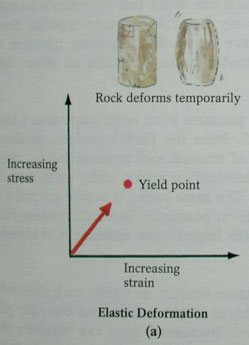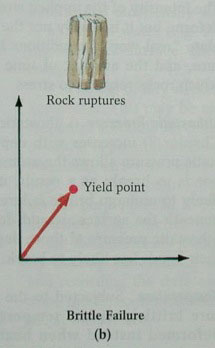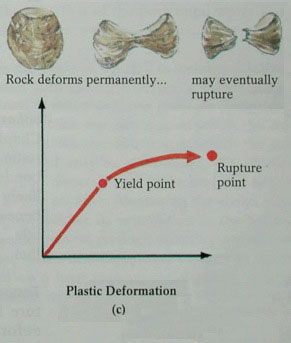A linear and reversible relationship between stress and strain characterises elastic deformation. The deformation is transient. The sample recovers its initial shape as soon as the deviatoric stress is removed.
 |
Brittle failure: the deviatoric stress reaches a treshold (the yield point) beyond which fractures develop. The deviatoric stress drops suddently as the rock breaks down.
 |
Plastic deformation: the deviatoric stress reaches a treshold (the yield point) beyond which permanent deformation is stored in the rock sample. Beyond the elastic yield point the stress/strain relationship is no longer linear. Eventually brittle failure may develop.
 |